run through http://sarvajan.ambedkar.org
Universal Welfare Friend - E- GOOD NEWS
DHAMMACAKKA PAVATTANA CELEBRATIONS 21-22 JULY 2013
MAHA BODHI SOICETY 14, Kalidasa Road, Gandhinagar, Bengaluru - 560009, Karnataka, India
PROGRAM
9:00 AM Worshiping the Sacred Bodhirukka and the
Mahabodhi Maitri Stupa, Dhatu Stupa, Sripada Cetiya
Buddha Puja and Sila Yacana
Chanting of the
DHAMMACAKKA PAVATTANA SUTTA
10:00 AM Discourse by Venerable Acharya Buddharakkhita
Founder President, Maha Bodhi Society, Bangalore (on Video)
Inauguration by
Shri Dinesh Gundu Rao
Honourable Minister Food and Civil Supplies,
Chief Guest and Release of Kannada Pali Grammer by
Dr. G. Parameshwar
Chairman, Siddhartha Academy of Higher Studies, Tumkur
President, KPCC
Discourse by
Venerable Ananda Bhante
General Secretary, Maha Bodhi Society, Bengaluru,
11:00 AM Sanghadana by devotees - alms offering to the monks
12:00 noon Meals for devotees
2:00 PM Dhamma Discourses
6:00 PM Buddha Puja and
Chanting of the Dhammacakka Pavattana Sutta
https://www.youtube.com/watch?v=wtB_TuD_520&list=PL07B0067963663811&index=20
http://archive.org/details/PaliChanting-DhammacakkappavattanaSutta-KinhTungPali
http://pirith.org/download/DhammaChakka1.mp3
http://archive.org/details/Buddhist.Chanting
https://www.youtube.com/playlist?list=PL07B0067963663811

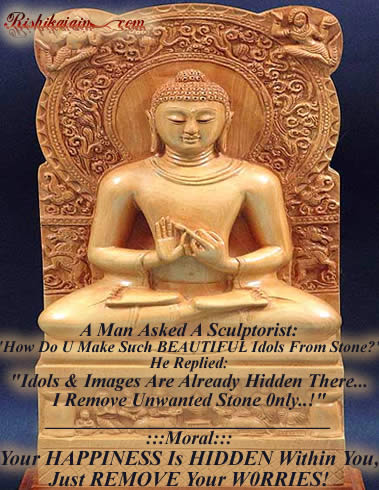
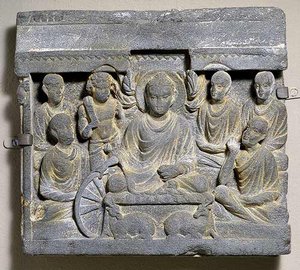
This engraving depicts the Buddha’s first sermon, which according to the
Dhammacakka Pavattana Sutta took place in the Deer Park at Sarnath in
northern India.
Read it and experience it.
Dhammacakkappavattana Sutta: Setting the Wheel of Dhamma in Motion
translated from the Pali by Thanissaro Bhikkhu
I have heard that on one occasion the Blessed One was staying at
Varanasi in the Game Refuge at Isipatana. There he addressed the group
of five monks:
“There are these two extremes that are not to be indulged in by one
who has gone forth. Which two? That which is devoted to sensual pleasure
with reference to sensual objects: base, vulgar, common, ignoble,
unprofitable; and that which is devoted to self-affliction: painful,
ignoble, unprofitable. Avoiding both of these extremes, the middle way
realized by the Tathagata — producing vision, producing knowledge —
leads to calm, to direct knowledge, to self-awakening, to Unbinding.
“And what is the middle way realized by the
Tathagata that — producing vision, producing knowledge — leads to calm,
to direct knowledge, to self-awakening, to Unbinding? Precisely this
Noble Eightfold Path: right view, right resolve, right speech, right
action, right livelihood, right effort, right mindfulness, right
concentration. This is the middle way realized by the Tathagata that —
producing vision, producing knowledge — leads to calm, to direct
knowledge, to self-awakening, to Unbinding.
“Now this, monks, is the noble truth of stress:
Birth is stressful, aging is stressful, death is stressful; sorrow,
lamentation, pain, distress, & despair are stressful; association
with the unbeloved is stressful, separation from the loved is stressful,
not getting what is wanted is stressful. In short, the five
clinging-aggregates are stressful.
“And this, monks, is the noble truth of the origination of stress:
the craving that makes for further becoming — accompanied by passion
& delight, relishing now here & now there — i.e., craving for
sensual pleasure, craving for becoming, craving for non-becoming.
“And this, monks, is the noble truth of the cessation of stress: the
remainderless fading & cessation, renunciation, relinquishment,
release, & letting go of that very craving.
“And this, monks, is the noble truth of the way of practice leading
to the cessation of stress: precisely this Noble Eightfold Path — right
view, right resolve, right speech, right action, right livelihood, right
effort, right mindfulness, right concentration.
“Vision arose, insight arose, discernment arose, knowledge arose,
illumination arose within me with regard to things never heard before:
‘This is the noble truth of stress.’ Vision arose, insight arose,
discernment arose, knowledge arose, illumination arose within me with
regard to things never heard before: ‘This noble truth of stress is to
be comprehended.’ Vision arose, insight arose, discernment arose,
knowledge arose, illumination arose within me with regard to things
never heard before:’ This noble truth of stress has been comprehended.’
“Vision arose, insight arose, discernment arose, knowledge arose,
illumination arose within me with regard to things never heard before:
‘This is the noble truth of the origination of stress’… ‘This noble
truth of the origination of stress is to be abandoned’ … ‘This noble
truth of the origination of stress has been abandoned.’
“Vision arose, insight arose, discernment arose, knowledge arose,
illumination arose within me with regard to things never heard before:
‘This is the noble truth of the cessation of stress’… ‘This noble truth
of the cessation of stress is to be directly experienced’… ‘This noble
truth of the cessation of stress has been directly experienced.’
“Vision arose, insight arose, discernment arose, knowledge arose,
illumination arose within me with regard to things never heard before:
‘This is the noble truth of the way of practice leading to the cessation
of stress’… ‘This noble truth of the way of practice leading to the
cessation of stress is to be developed’… ‘This noble truth of the way of
practice leading to the cessation of stress has been developed.’
“And, monks, as long as this — my three-round, twelve-permutation
knowledge & vision concerning these four noble truths as they have
come to be — was not pure, I did not claim to have directly awakened to
the right self-awakening unexcelled in the cosmos with its deities,
Maras, & Brahmas, with its contemplatives & brahmans, its
royalty & commonfolk. But as soon as this — my three-round,
twelve-permutation knowledge & vision concerning these four noble
truths as they have come to be — was truly pure, then I did claim to
have directly awakened to the right self-awakening unexcelled in the
cosmos with its deities, Maras & Brahmas, with its contemplatives
& brahmans, its royalty & commonfolk. Knowledge & vision
arose in me: ‘Unprovoked is my release. This is the last birth. There is
now no further becoming.’
That is what the Blessed One said. Gratified, the group of five monks
delighted at his words. And while this explanation was being given,
there arose to Ven. Kondañña the dustless, stainless Dhamma eye:
Whatever is subject to origination is all subject to cessation.
And when the Blessed One had set the Wheel of Dhamma in motion, the
earth devas cried out: “At Varanasi, in the Game Refuge at Isipatana,
the Blessed One has set in motion the unexcelled Wheel of Dhamma that
cannot be stopped by brahman or contemplative, deva, Mara or God or
anyone in the cosmos.” On hearing the earth devas’ cry, the devas of the
Four Kings’ Heaven took up the cry… the devas of the Thirty-three… the
Yama devas… the Tusita devas… the Nimmanarati devas… the
Paranimmita-vasavatti devas… the devas of Brahma’s retinue took up the
cry: “At Varanasi, in the Game Refuge at Isipatana, the Blessed One has
set in motion the unexcelled Wheel of Dhamma that cannot be stopped by
brahman or contemplative, deva, Mara, or God or anyone at all in the
cosmos.”
So in that moment, that instant, the cry shot right up to the Brahma
worlds. And this ten-thousand fold cosmos shivered & quivered &
quaked, while a great, measureless radiance appeared in the cosmos,
surpassing the effulgence of the devas.
Then the Blessed One exclaimed: “So you really know, Kondañña? So you
really know?” And that is how Ven. Kondañña acquired the name
Añña-Kondañña — Kondañña who knows.
“Dhammacakkappavattana Sutta: Setting the Wheel of Dhamma in Motion”
(SN 56.11), translated from the Pali by Thanissaro Bhikkhu. Access to Insight, 12 February 2012, http://www.accesstoinsight.org/tipitaka/sn/sn56/sn56.011.than.html .
Gautama Siddhattha Buddha
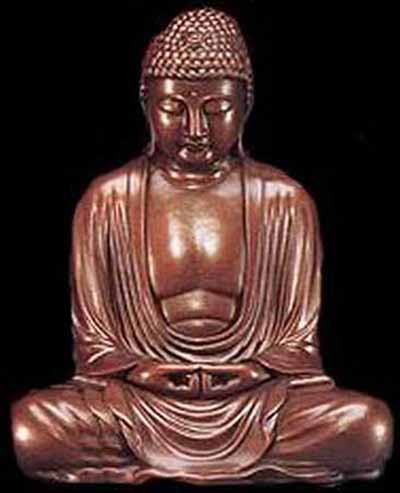
The title Buddha means Awakened One.
In Bhuddism, the Buddha refers to Siddhattha Gautama.
Buddha was born around 565 B.C. in Lumbini in modern day Nepal. His
name ‘Siddhattha Gautama,’ means ‘descendant of Gotama whose aims are
achieved/who is efficacious in achieving aims’, he later became the
Buddha (literally Enlightened One or Awakened One). He is also commonly
known as ‘Shakyamuni’ or ‘Sakyamuni’ (lit. “The sage of the Shakya
clan”) and as the Tathagata (lit. “thus come” or “thus gone”). Gautama
was a contemporary of Mahavira.
Few of the details of the Buddha’s life can be independently verified,
and it is difficult to determine what is history and what is myth.
According to most Buddhist traditions, Siddhattha Gautama, the future
Buddha lived many lives before coming to our present world era. In his
many existences during the long, long period of time and in the one
hundred thousand worlds, the future Buddha had fulfilled the Ten
Paramitas, and, in order to save this world, he was to be born in our
era and to become a fully enlightened Buddha.
Siddhartha Gautama was born in Lumbini (a town situated in modern Nepal,
near the Indian border) under the full moon of May to the clan of the
Shakyas, a warrior tribe. The day of his birth is widely celebrated in
Buddhist countries as Vesak. Gautama’s father was the king of
Kapilavastu in Magadha, and Gautama was born a prince, destined to a
life of luxury.
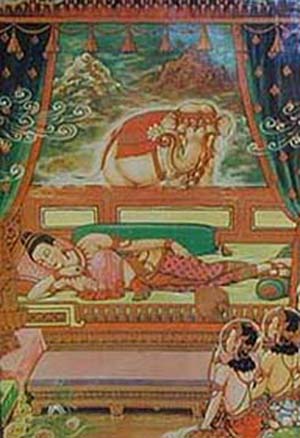
Before Siddartha Gautama’s birth, his mother dreamed
of a white elephant presenting her with a lotus flower.
During the birth celebrations, a seer announced that this baby would either become a great king or a great holy man.
Since King Suddhodana had long awaited a child, he and everyone else in
the palace rejoiced at the birth of a son. The King immediately called a
famous wise sage, Asita. Asita told the king, “If he remains at home,
the child will become the Wheel-rolling King. If he leaves home, he will
become the great teacher, the Buddha.”
His father, wishing for Gautama to be a great king, shielded his son from religious teachings or knowledge of human suffering.
His mother Maya, died, on the seventh day after her delivery and Maya’s
sister, Mahapajapati became the step mother of Siddhattha. The prince
grew up in an environment of care and love, respect and joy. However, he
was sometimes unhappy.
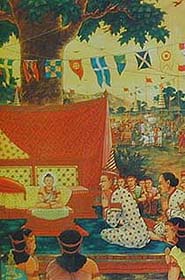
At a palace festival, the young prince sat down under a tree and was
soon lost in meditation. It is said that though the shadows of all the
trees had lengthened, the shadow of the tree under which he sat had
not moved.
Buddha studied science and technology, art and philosophy, religious
knowledge under the tuition of famous scholars, riding, archery, and
fencing. He excelled at everything. His expected much from his son and
made him crown prince and heir apparent.
But this did not please the young man, who steadily grew to be thoughtful and depressed.
To cheer him up, his worried father and foster mother built three
palaces, one for cold weather, one for hot weather, and one for the
rainy season. They appointed many beautiful court ladies to wait on him
and arranged banquets with dancing and music.
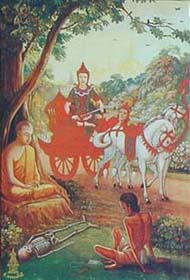
Hoping to give his son pleasure, King Suddhodana arranged four trips
outside the city of Kapilavastu, one through each of its four gates.
At the age of thirteen, Gautama was escorted by his attendant Channa on four subsequent visits outside of the palace.
There, he came across the “four sights”: an old crippled man, a diseased
man, a decaying corpse, and finally an ascetic. Gautama realized then
the harsh truth of life - that death, disease, age, and pain were
inescapable, that the poor outnumbered the wealthy, and that even the
pleasures of the rich eventually came to nothing.
“The four sights/gates” represent the state of mind of the prince with
respect to the suffering of aging, illness and death. Superficial
prosperity in economy and relative stability in political environment
cannot relieve people from worry, fear, anxiety and suffering and cannot
lead them to ultimate happiness.
As the boy reached the age of 16, his father arranged a marriage to a
cousin of the same age, Yashodhara, and she gave birth to a son, Rahula.
Although his father ensured that Gautama was provided with everything
he could want or need, Gautama was constantly troubled and internally
dissatisfied.
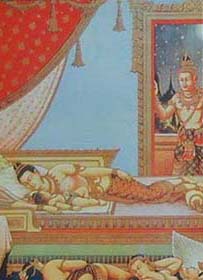
The future Buddha bid farewell to his wife, Princess Yasodhara and new
son, Rahula, before renouncing the householder’s life to seek an end to
suffering. He would devote himself to search for the ultimate truth.
Though his love to his family may have hindered him, the birth of his
son, Rahula, provided a favorable occasion for his departure since with
the birth of his son, Siddattha had fulfilled his karma to his father
and his wife according to the Indian tradition.
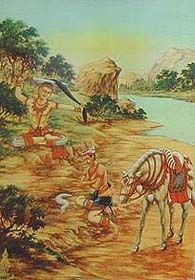
Departing from the palace and the wearing rags, the prince chose to become a Samana.
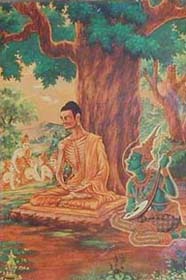
The young ascetic practiced extreme self-mortification for six years in
the hopes of discovering Truth. It is said he ate little more than a
single sesame seed or grain of rice each day. After these six years he
determined to continue his quest in a new manner. He practiced a Middle
Way between self-mortification and self- indulgence.
During that time, Siddhatha went to Rajagaha, the capital of Magadha,
which was the centre of culture with many orthodox and unorthodox monks.
By that time, the two major disciplines for the sake of enlightenment were meditation and ascetic austeritics.
Siddhattha studyied meditation under two famous teachers, Alara-Kalama and Uddaka-Ramaputta.
The state attained by Alara-Kalama was that of a much higher formless world where physical matter no longer exists.
Uddaka-Ramaputta reached an even higher state at which neither thought nor non-thought existed.
Siddhatha did not find it difficult to attain either state.
Attaining these states of mind did not ease his mental anxieties,
because once he stopped meditation, he returned to the mental state of
depression.
He knew that the true liberation from the attachment of ignorance and
suffering could be attained only by reaching a state of absolute
tranquility.
He left his teachers to continue his search for the ultimate truth.
He next practised asceticism, which was very common among Samanas. They
believed that the human suffering was caused by the attachment to the
physical body and the mental spirit. Suffering can only be freed by
detaching the spirit imposed by the body. Therefore, they tormented
themselves for the purpose of weakening the power of the physical body
over the mental spirit, until the body was destructed.
Siddhattha passed through the country of Magadha to the town of Uruvela,
where he settled in a grove of trees to find enlightenment.
Practising austerities for six years, he was extremely tough on himself
and put himself through many difficult tests after which was became so
weak his body was nothing more than skin and bones.
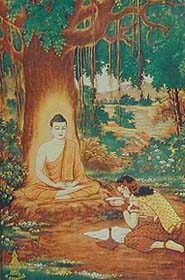
Soon thereafter, a young woman offered the future Buddha a bowl of rice and milk.
He accepted it, restored his strength, and began his practice anew.
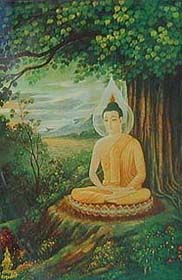
He sat under the shade of a pippala tree (now called a Bodhi tree)
determined not to rise until fully enlightened. He accepted a bowl of
milk from a maid Sugata. He ate and gradually recovered his strength.
Soon he realized the 4 Noble Truths and the secret to true peace and
happiness.
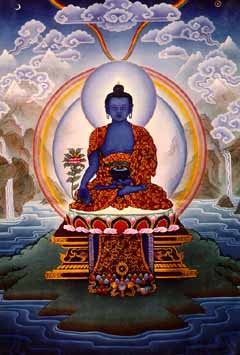
1. The Noble Truth of Suffering: There is Suffering - Rebirth,
old age, disease, death, sorrow, lamentation, pain, grief and despair,
association with objects we dislike, separation from objects we love,
not to obtain what one desires cause suffering. There are also many
happy hours and pleasure in man’s life-time, but according to the law of
nature, they are impermanent and these last only for a short time and
vanish into nothing. Only sorrow, lamentation, pain, grief and despair
are left by them behind.
2. The Noble Truth of The Arising of Suffering: Suffering has an
origin - The Threefold Craving leads every being from birth to birth and
is accompanied by joy and lust, seeking its gratification here and
there, namely: Sensual Craving, Craving for Existence and Craving for
Wealth and Power. There are also a sixfold craving, namely the eye
craves for forms, the ear craves for sounds, the nose craves for odours,
the tongue craves for taste, the body craves for objects, and the mind
craves for noun, dreams or illusions. These Cravings and ignorance of
the law of nature are the condition of origin of individual suffering.
3. The Noble Truth of the Cessation of Suffering: Suffering Can
Cease - The condition of cessation of suffering is the complete fading
away and extinction of this three fold craving, forsaking it and giving
it up, the liberation and detachment from it. The condition of mind of a
person who has been giving up his threefold cravings or this sixfold
craving together with ignorance can realize Nirvana (or the Extinction
of the Cravings).
4. The Noble Truth of The Path leading to the Cessation of Suffering:
There is a Path our of Suffering - It is the ‘Noble Eightfold Path’
(or the ‘Middle Path’ because it avoids the two extremes of sensual
pleasure and self-mortification), that leads to the Cessation of
Suffering.
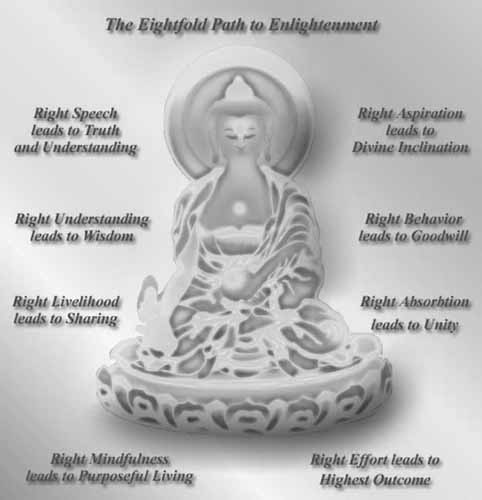
He discovered the reality of universe, and found the path to free
humanity from the suffering of birth and death thus attaining eternal
happiness.
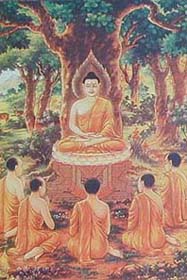
As a Buddha, an awakened one, he returned to teach his five fellow
practitioners the Noble Truth of Unsatisfactoriness, the Noble truth of
the Cause (Craving), the Noble Truth of Cessation, and the Noble 8-fold
Path leading to the cessation of all suffering. The wheel of Dharma
had been set in motion.
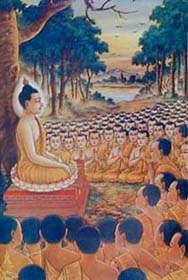
The Buddha gained many followers. On one occasion 1,250 monks gathered
spontaneously to hear his teaching. (This day is commemorated as a
holiday in Buddhist countries.)
After his awakenment, the day on which he delivered his first discourse and
thereby set in motion the Wheel of Dhamma is celebrated with solemnity. This
discourse epitomizes the entire teaching of the Buddha. This is on the full-moon
day of July. This day also marks the beginning of the Vassa Vasa - Rains retreat
for monks for three months.
Observances by Buddhists
Buddhists observe on this day uposatha i.e. to observe eight precepts. Vipassana meditators practice meditation on this day under the guidance of their teachers. Rainy season i.e. varsha vassa
also starts with this day. During the rainy season lasting for three
lunar months from July to October. During this time Buddhist monks
remain in a single place, generally in their temples. In some
monasteries, monks dedicate the Vassa to intensive meditation. During
Vassa, many Buddhist lay people reinvigorate their spiritual training
and adopt more ascetic practices, such as giving up meat, alcohol, or
smoking.
Uposatha
The Uposathais Buddhist day of observance, in existence from the Buddha’s time (500 BCE), and still being kept today in Buddhist countries. The Buddha taught that the Uposatha day is for “the cleansing of the defiled mind,” resulting in inner calm and joy. On this day, lay disciples and monksintensify their practice, deepen their knowledge and express communal
commitment through millennia-old acts of lay-monastic reciprocity. On
these days, the lay followers make a conscious effort to keep the Five Precepts or sometimes the 8-precepts. It is a day for practicing the Buddha’s teachings and meditation.
Theravada countries
In general, Uposatha is observed about once a week in Theravada countries in accordance with the four phases of the moon: the new moon, the full moon, and the two quarter moons in between. In some communities, such as in Sri Lanka, only the new moon and full moon are observed as uposatha days.
In Burma, Uposatha (called ဥပုသ် ubot nei) is observed by more pious Buddhists on the following days: waxing moon (လဆန်း la hsan), full moon (လပြည့်နေ့ la pyei nei), waning moon (လဆုတ် la hsote), and new moon (လကွယ်နေ့ la kwe nei).
The most common days of observance are the full moon and the new moon.
In pre-colonial Burma, the Uposatha day (commonly rendered as the
Buddhist Sabbath in English) was a legal holiday that was observed
primarily in urban areas, where secular activities like business
transactions came to a halt.However, since colonial rule, Sunday has replaced the Uposatha day as the legal day of rest. All major Burmese Buddhist holidays occur on Uposatha days, namely Thingyan,
the beginning of the Buddhist lent (beginning in the full moon of Waso,
around July to the full moon of Thadingyut, around October). During
this period, Uposatha is more commonly observed by Buddhists than during
the rest of the year. During Uposatha days, Buddhist monks at each
monastery assemble and recite the Patimokkha (a concise compilation of the Vinaya.
For a 2012 calendar of Thai uposatha days, see John Bullitt’s “Calendar of Uposatha Days.”
Mahayana countries
In Mahayana countries that use the Chinese calendar,
the Uposatha days are observed six times a month, on the 8th, 14th,
15th, 23rd and final two days of each lunar month. In Japan, these six
days are known as the roku sainichi (六斎日 Six Days of Fasting?).
Names of Full Moon Uposatha Days
The Pali names of the uposatha days are based on the Sanskrit names of the nakśatra (Pali: nakkhatta), the constellations or lunar mansions through which the moon passes within a lunar month.[9]
| Associated Month | Pali | Sanskrit | Burmese | Sinhala | Thai |
|---|---|---|---|---|---|
| January | Phussa | Puṣya | Pyatho | Duruthu | Pusaya (ปุศยะ) |
| February | Māgha | Maghā | Tabodwe | Navam | Makha (มาฆะ) |
| March | Phagguṇa | Phalgunī | Tabaung | Medin (Maedhin) | Pholkuni (ผลคุณี) |
| April | Citta | Chitrā | Tagu | Bak | Chittra (จิตรา) |
| May | Visākhā | Viśākhā | Kason | Vesak | Visakha (วิสาขา) |
| June | Jeṭṭhā | Jyeṣṭha | Nayon | Poson | Chetta (เชษฐา) |
| July | Āsāḷhā | Aṣāḍhā | Waso | Esala (Aesala) | Asarnha (อาสาฬหะ) |
| August | Sāvana | Śrāvaṇa | Wagaung | Nikini | Savana (สาวนะ) |
| September | Poṭṭhapāda | Bhādrapadā | Tawthalin | Binara | Phattarapratha (ภัทรปทา) |
| October | Assayuja | Aśvinī | Thadingyut | Vap | Assavani (อัศวนี) |
| November | Kattikā | Kṛttikā | Tazaungmon | Il | Krittika (กฤติกา) |
| December | Māgasira | Mṛgaśiras | Natdaw | Unduvap | Maruekasira (มฤคศิระ) |
The word “uposatha” is derived fromwhich refers to the pre-Buddhistic fast day that preceded Vedic sacrifices.
In the Buddha’s time, some ascetics used the new and full moon as
opportunities to present their teachings. The Uposatha Day was
instituted by the Buddha at the request of King Bimbisara, and the Buddha instructed the monks to give teachings to the laypeople on this day, and told the monks to recite the Patimokkha every second Uposatha day.
Lay practice
On each uposatha day, devout lay people practice the Eight Precepts.
For lay practitioners who live near a monastery, the uposatha is an opportunity for them to visit a local monastery, make offerings, listen to Dhamma talks by monks and participate in meditation sessions.
For lay practitioners unable to participate in the events of a local
monastery, the uposatha is a time to intensify one’s own meditation and
Dhamma practice, for instance, meditating an extra session or for a longer time,reading or chanting special suttas, recollecting or giving in some special way.
Monastic practice
On the new-moon and full-moon uposatha, in monasteries where there are four or more bhikkhus, the local Sangha will recite the Patimokkha. Before the recitation starts, the monks will confess any violations of the disciplinary rules to another monk or to the Sangha.
Depending on the speed of the Patimokkha chanter (one of the monks),
the recitation may take from 30 minutes to over an hour. Depending on
the monastery, lay people may or may not be allowed to attend.
Communal reciprocity
Describing his experience of Uposatha day in Thailand, Khantipalo (1982a) writes:
“Early in the morning lay people give almsfood to the bhikkhus who
may be walking on almsround, invited to a layman’s house, or the lay
people may take the food to the monastery. Usually lay people do not eat
before serving their food to the bhikkhus and they may eat only once
that day…. Before the meal the laity request the Eight Precepts [from
the bhikkhus] …, which they promise to undertake for a day and night.
It is usual for lay people to go to the local monastery and to spend all
day and night there…. [In monasteries where] there is more study,
[lay people] will hear as many as three or four discourses on Dhamma
delivered by senior bhikkhus and they will have books to read and
perhaps classes on Abhidhamma to attend…. In a meditation monastery
…, most of their time will be spent mindfully employed – walking and
seated meditation with some time given to helping the bhikkhus with
their daily duties. So the whole of this day and night (and enthusiastic
lay people restrict their sleep) is given over to Dhamma….”
Special uposatha days
In Thailand five full-moon uposatha days are of special significance and are called puja, ‘days of worship’, :
- Visakha Puja or Visakha Uposatha or Vesak (”Buddha Day”):
is the most sacred Buddhist holiday. It is the anniversary of the Buddha’s birth, awakening and parinibbana.
- Asalha Puja or Asalha Uposatha. (”Dhamma Day”):
- anniversary of the Buddha’s delivering his first discourse, “Dhammacakka Sutta.” The three-month-long Rains Retreat residence starts the following day.
- the end of the Rains Retreat residence during which time each monk
atones before the Sangha for any offense they may have committed.
Anniversary of the Buddha’s delivering the “Anapanasati Sutta.” This event is not connected to an Uposatha (Poya) day in Sri Lanka and perhaps is particular to Thailand.
- Magha Puja or Magha Uposatha. (”Sangha Day”):
Anniversary of the assembling of 1250 monks in the Buddha’s presence
during which time he delivered the “Ovada-Patimokkha Gatha.”
In Sri Lanka three full moon Uposatha or Poya days are of special significance.
- Vesak Poya, which is described above.
- Poson Poya corresponds to the Jeṭṭhā uposatha, which falls in June. It is of special significance in Sri Lanka because the arahant Mahinda, King Asoka’s son, officially introduced Buddhism to Sri Lanka on this day in the 3rd century B.C.
- Esala Poya corresponds to Asalha (Āsāḷhā) uposatha, the full
moon of July, and is described above. This day has special significance
in Sri Lanka because it was the day that 56 nobles, headed by Prince
Arițțha, became the first Sri Lankans to be fully ordained as a Buddhist
monks (bhikkhu) at Cetiyagiri in Mihintale by Mahinda Thera and his companions. It therefore marks the founding of the local Sri Lankan Buddhist monastic Bhikkhu Sangha.
Prime Ministers of India.Jawaharlal Nehru proved that a rich man can become the country’s Prime Minister; Lal Bahadur Shastri proved that a poor man can become the Prime Minister; Indira Gandhi proved that a woman can become the Prime Minister; Morarji Desai proved that an old man can become the Prime Minister; Rajiv Gandhi proved that a young man can become the Prime Minister; I.K. Gujral proved that a gentleman can become the Prime Minister; Deve Gowda proved just about anybody can become the Prime Minister; Manmohan Singh has proved that India does not need a Prime Minister.
|
